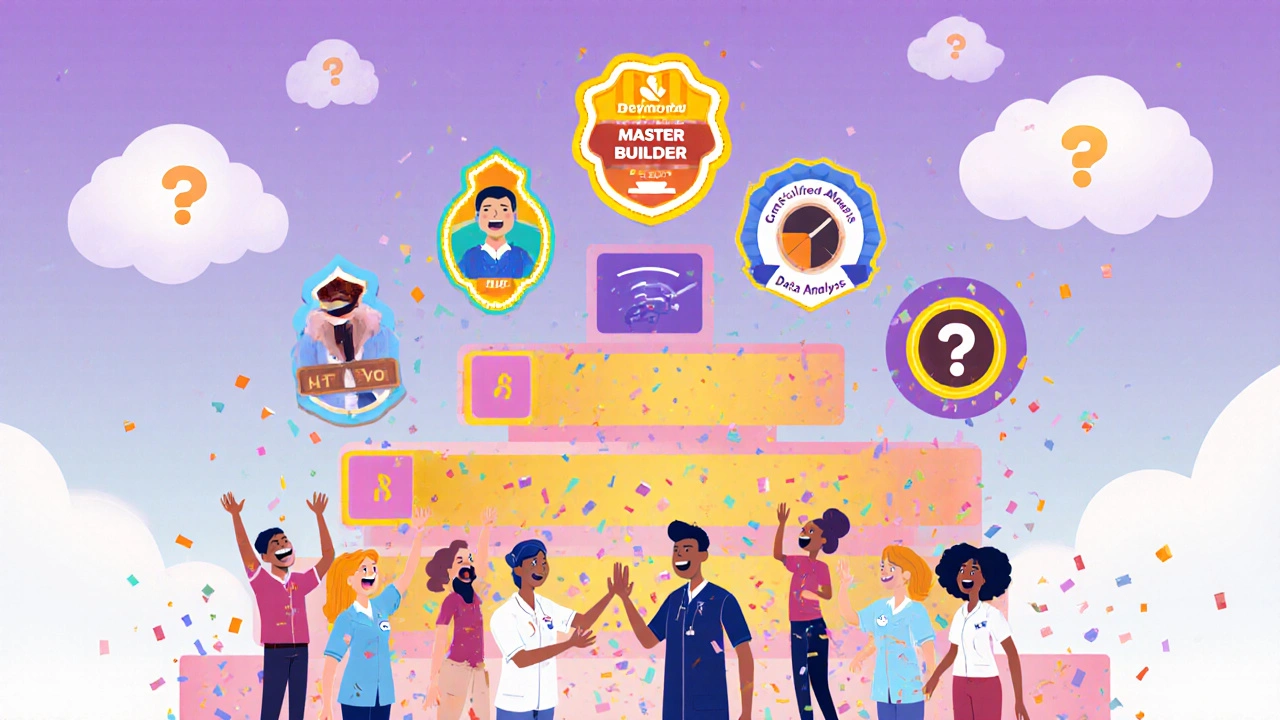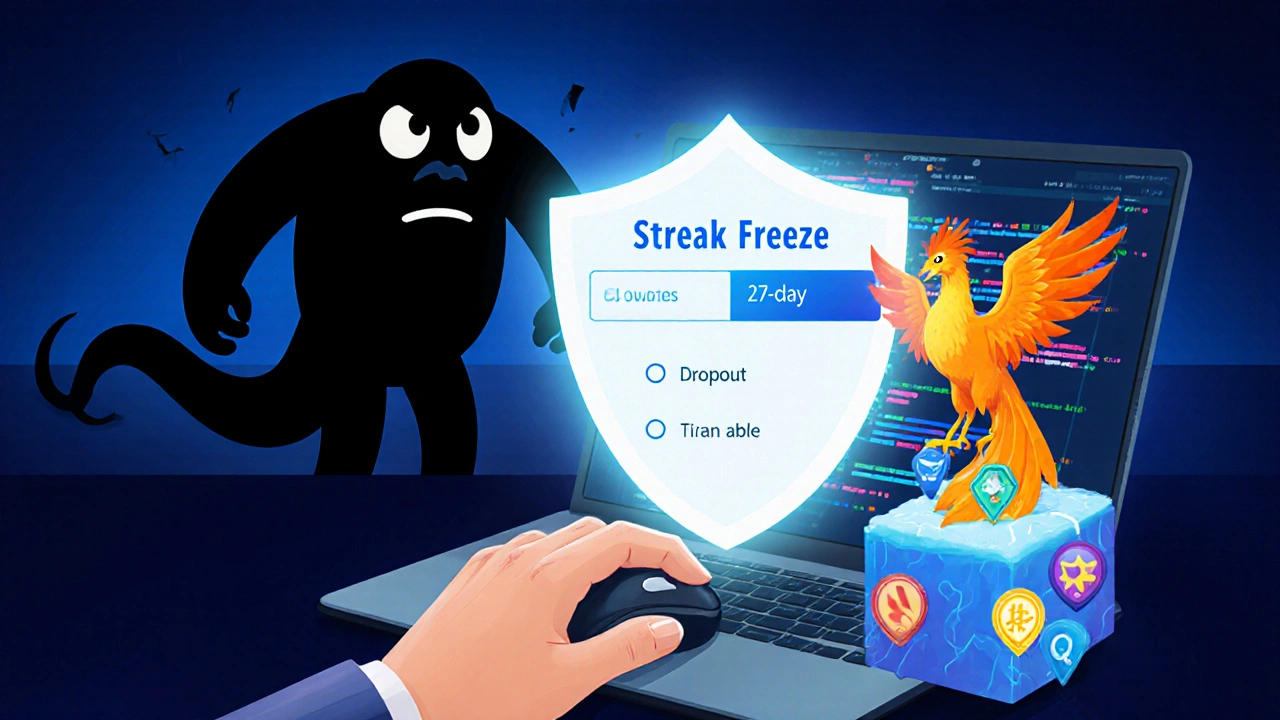How Gamification Boosts Online Course Completion Rates
 Nov, 6 2025
Nov, 6 2025
Over 70% of people who sign up for an online course never finish it. That’s not just a statistic-it’s a broken promise. You invest time, money, and hope into learning something new, only to lose momentum halfway through. Why? Because most online courses feel like chores, not adventures. The solution isn’t better content. It’s better motivation. Enter gamification: turning learning into a game you actually want to play.
Why People Drop Out of Online Courses
It’s not laziness. It’s not lack of intelligence. It’s design. Most courses assume motivation is constant. But human attention fades. Without feedback, progress feels invisible. Without rewards, effort feels pointless. A 2024 study from the University of Michigan tracked 12,000 learners across five platforms. Those who received instant feedback and visible progress bars were 2.3 times more likely to complete their course than those who didn’t.
Think about it: when you play a mobile game, you get a notification every time you level up. You see your rank climb. You unlock new skins. You hear that satisfying ding. Online courses? You click ‘next’ and get a blank screen. No celebration. No recognition. No reason to come back.
How Gamification Works in Learning
Gamification isn’t about adding points and badges for the sake of it. It’s about triggering the same brain chemicals that make games addictive-dopamine, serotonin, and oxytocin-but in service of real learning. When you earn a badge for finishing a module, your brain says, “I did something valuable.” When you see your streak, you think, “I don’t want to break this.” When you climb a leaderboard, you feel a little pride.
The key is aligning game mechanics with learning goals. Badges should mark mastery, not just completion. Leaderboards should encourage healthy competition, not shame. Progress bars need to show real advancement-not just how many videos you’ve watched, but how much you’ve actually understood.
Five Proven Gamification Tactics That Work
- Progress Bars with Milestones - Instead of one long bar, break it into chunks. Finish Module 1? Unlock a badge. Complete three quizzes in a row? Get a bonus lesson. People stay engaged when they see small wins.
- Experience Points (XP) and Levels - Assign XP for watching videos, submitting assignments, participating in forums. Hit 500 XP? You’re a “Novice Learner.” Hit 2,000? You’re a “Master Builder.” Levels create a sense of growth that feels real.
- Badges for Skill Mastery - Don’t give a badge for “watched video 5.” Give one for “Successfully solved 5 real-world coding problems” or “Passed the final project with 90%+.” These badges become digital proof of skill.
- Streaks and Daily Challenges - “Complete one quiz today to keep your 12-day streak alive.” Streaks tap into loss aversion. People hate breaking a streak more than they like earning a reward.
- Team Challenges and Collaborative Goals - Form small learning teams. Reach a group XP target together? Unlock a live Q&A with the instructor. Social accountability keeps people showing up.

Real Examples That Actually Moved the Needle
In 2023, Duolingo’s language course completion rate jumped from 22% to 48% after introducing daily streaks, XP rewards, and a “streak freeze” feature. That’s more than double. They didn’t change the lessons. They changed how learners felt about showing up.
Codecademy added a “Project Portfolio” system where learners earn badges for building real apps. Those who completed at least three projects were 3.5 times more likely to enroll in a paid track. The badges weren’t just decorations-they became proof of competence.
A corporate training platform for healthcare workers saw completion rates rise from 31% to 67% after introducing team-based challenges. Nurses competed to complete the most compliance modules. The winning team got a coffee gift card. Simple. Effective. Human.
What Doesn’t Work (And Why)
Not all gamification is good gamification. Here’s what fails:
- Random badges - Giving a “Top Viewer” badge to someone who just clicked through videos? That feels fake. Learners spot empty rewards instantly.
- Public leaderboards that shame - Putting low performers at the bottom creates anxiety, not motivation. Use private progress comparisons instead.
- Too many rewards - If every action gives a star, nothing feels special. Less is more. Reward effort, not activity.
- Ignoring accessibility - Not everyone wants to compete. Offer solo paths alongside team options. Gamification should include, not exclude.

Designing Gamification That Lasts
The best systems evolve. Start small. Test one mechanic-like daily streaks-on a single course. Track completion rates before and after. If it lifts engagement by 15%, roll it out wider.
Let learners choose their path. Some want to race up leaderboards. Others want to collect badges for their LinkedIn profile. Give both options. Autonomy increases ownership.
And always tie rewards to real outcomes. A badge for “Finished Module 4” is weak. A badge for “Built a working budget tracker using Python” is strong. The goal isn’t to make learning fun. It’s to make learning feel meaningful.
Tools to Get Started
You don’t need to build from scratch. Platforms like Moodle a free, open-source learning platform that supports gamification plugins like Badgr and Gamify, Outgrow a tool for creating interactive quizzes and progress trackers, and Kahoot! a game-based learning platform used in classrooms and corporate training offer built-in gamification features. Even Canva and Google Forms can be used to create simple progress trackers with visual rewards.
Start with free plugins. Test. Measure. Improve.
What Comes Next?
Gamification isn’t the endgame. It’s the bridge. Once learners complete a course, they need a reason to keep going. That’s where communities, mentorship, and real-world projects come in. Gamification gets them to the finish line. What happens after? That’s where real transformation begins.
Stop treating learners like passive viewers. Treat them like players in a game they’re winning-one small win at a time.
Does gamification work for adult learners?
Yes-especially adult learners. They’re often motivated by tangible outcomes: career advancement, skill certification, promotions. Gamification gives them visible proof of progress. A 2025 LinkedIn Learning report found that 68% of professionals aged 28-55 were more likely to complete a course if it included badges they could share on their profile.
Can gamification reduce course dropout rates?
Absolutely. Studies show that well-designed gamification can reduce dropout rates by 30-60%. The key is consistency: daily streaks, visible progress, and meaningful rewards. Platforms like Coursera and edX saw completion rates jump by 40% after adding XP systems and milestone badges.
Are points and badges enough?
No. Points and badges are just the surface. What matters is the psychology behind them. Learners need to feel competent, autonomous, and connected. Badges work when they represent real skill. Streaks work when they build habit. Rewards work when they’re tied to outcomes-not just clicks.
How do I avoid making gamification feel childish?
Focus on depth, not cartoon graphics. Use professional visuals. Name badges after skills, not emojis. Instead of “Level 1: Beginner,” use “Certified in Data Analysis.” Let the achievement speak for itself. Adults respond to recognition of competence, not cartoon stars.
What if my learners don’t like competition?
Don’t force it. Offer optional leaderboards and team challenges. Let people opt into competition. Most platforms now allow users to toggle between solo and group modes. The majority of learners still engage with streaks, progress bars, and personal badges-even if they never look at a leaderboard.
How long does it take to see results?
You’ll see engagement shifts within 2-4 weeks. Completion rates usually improve after 6-8 weeks, once habits form. Track weekly metrics: login frequency, quiz attempts, streak consistency. Small improvements add up fast.
Start with one change. Add a streak counter. Give a badge for the first completed project. Watch what happens. Learning doesn’t need to be boring. It just needs to feel worth it.